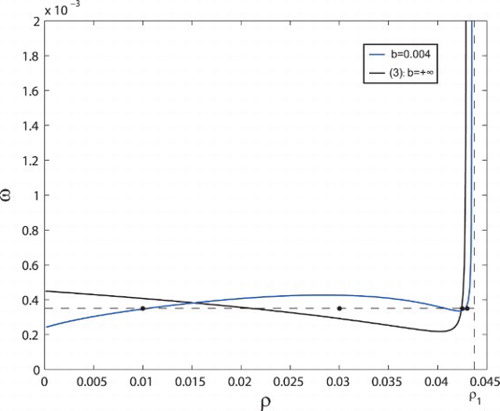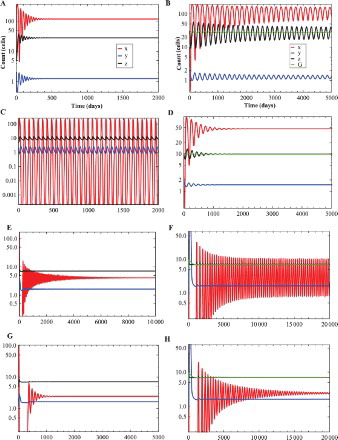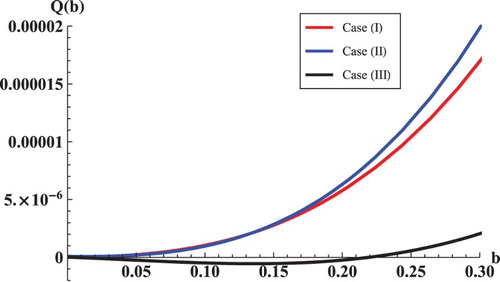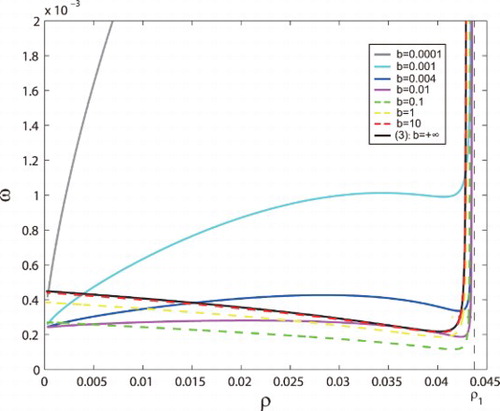Figures & data
Figure 1. Stability regions of tumour-presence equilibria and
and Hopf bifurcation are shown in the
parameter plane.

Figure 2. The time evolution curves of system (Equation3(3)
(3) ) (left panel) and system (Equation4
(4)
(4) ) (right panel). Here, we fix
, b=0.004 and choose four different ρ as 0.01 (a and b), 0.03 (c and d), 0.0425 (e and f), 0.043 (g and h). (a) Local asymptotic stability of
. (b) The time evolution curves of system (Equation4
(4)
(4) ) around
show periodic oscillations. (c) The time evolution curves of system (Equation3
(3)
(3) ) around
show periodic oscillations. (d) Local asymptotic stability of
. (e) Local asymptotic stability of
. (f) The time evolution curves of system (Equation4
(4)
(4) ) around
show periodic oscillations. (g ) Local asymptotic stability of
. (h) Local asymptotic stability of
.



